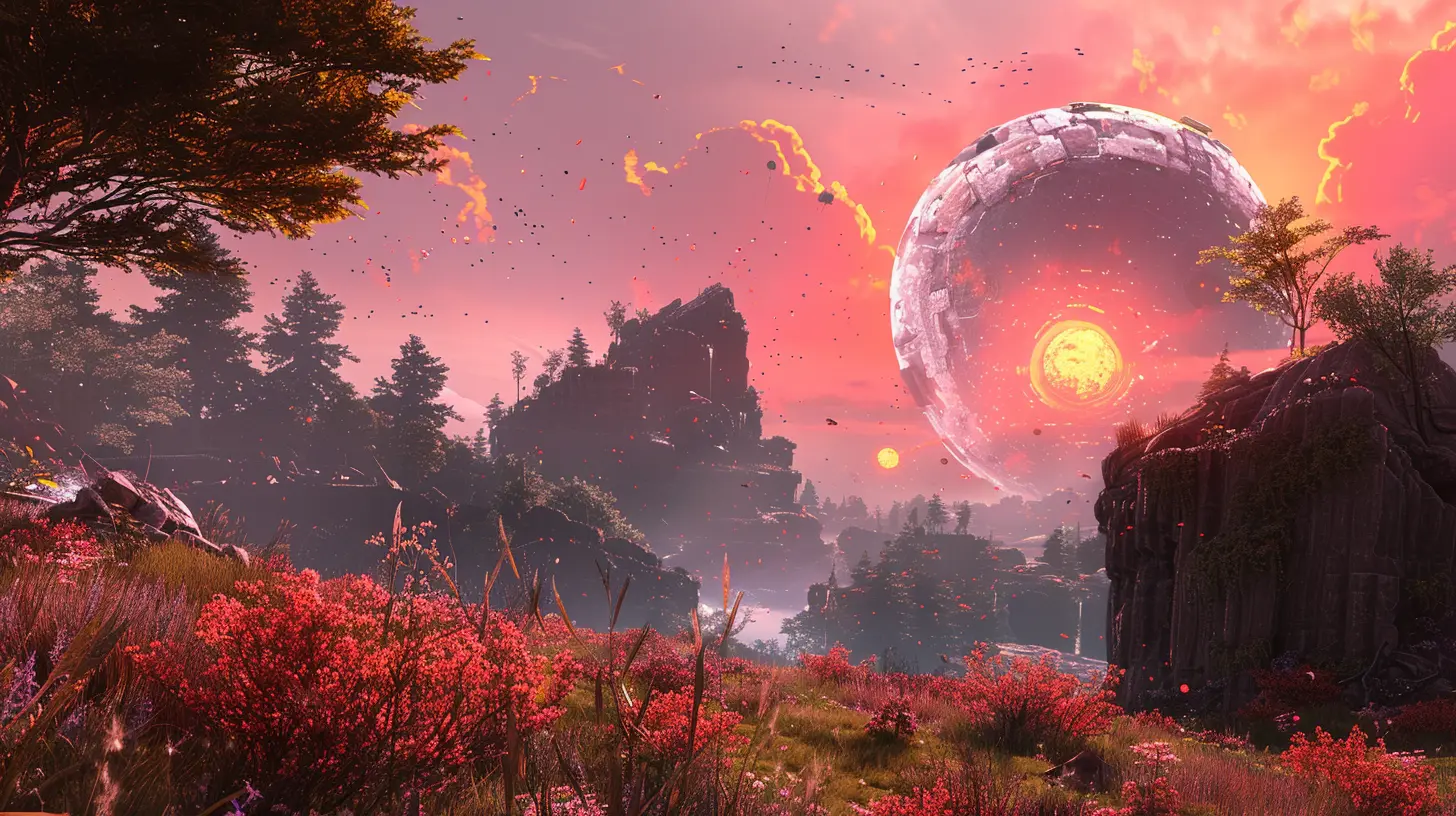Evolving Meta: How Balancing Changes Impact Battle Royale Games
2 June 2025
Battle royale games have become the rockstars of the gaming world. They're fast-paced, chaotic, and, let’s be honest, wildly unpredictable. One moment you're frying your enemies like bacon with a well-placed grenade, the next you're questioning all your life choices because you zigged when you should’ve zagged. But what makes battle royales so unique, aside from their absurdly stressful final circles, is their ever-evolving meta.
If you've been in the gaming scene for any amount of time, you've probably heard the term "meta" being thrown around like candy at a parade. But what is a meta? And how do balancing changes flip everything on its head? Brace yourself, because we’re about to dive into the wonderfully chaotic world of evolving metas and how they keep battle royale games exhilarating, frustrating, and, most importantly, fun.
What Is The Meta, Anyway?
First off, let’s break it down for the uninitiated. The term "meta" is gamer slang for the "Most Effective Tactics Available." It's the strategies, weapons, and playstyles that are so powerful or optimal that players gravitate toward them like moths to a flame. If you've ever been third-partied by a squad all armed with the same busted weapon, you’ve had a front-row seat to the power of the meta.In battle royales, the meta doesn’t just apply to weapons. It also includes movement mechanics, item prioritization, and even how players approach the map. What’s wild, though, is that the meta is never static. You think you’ve mastered it? BAM, a patch drops, and suddenly your trusty weapon of choice feels about as dangerous as a pool noodle. Developers love tweaking the balance to keep things fresh, but this leads to a very love-hate relationship with the player base. Let’s unpack how these changes play out.
The Balancing Act: Why Developers Mess With Your Favorites
What’s the deal with balancing changes? Why does your go-to weapon suddenly get nerfed the moment you start getting good with it? Well, it often boils down to keeping a level playing field. Game developers are sort of like chefs in a kitchen. If one ingredient (say, a ridiculously overpowered sniper rifle) overpowers the dish, they tweak the recipe so every ingredient shines.But here’s the twist: balance is subjective. Some players are happy when a weapon gets adjusted, while others act like the devs personally ruined their lives. It’s like when your favorite TV show kills off a beloved character—you’re devastated, but deep down, you know it was probably for the best.
Balancing the meta ensures that the game doesn’t become stale. Imagine if one gun dominated every match forever—it’d feel less like a diverse shooter and more like Monopoly, where everyone fights over who gets to be the banker (aka use the OP weapon). By shaking things up, developers force players to adapt, experiment, and find new strategies. This constant evolution is part of what keeps battle royales so addictive.
How Balancing Changes the Way We Play
You know that feeling when your favorite weapon gets nerfed, and it’s like someone just unplugged your controller in the middle of a match? Yeah, we’ve all been there. But balancing changes can actually be a blessing in disguise. Here’s how they influence the way we play:1. Shaking Up Weapon Preferences
When something overpowered gets nerfed, players scatter to find the "next big thing." A new shotgun buff might suddenly turn close-range combat into the Wild West, while a nerf to assault rifles pushes everyone toward snipers. These shifts inject variety into gameplay, forcing you to step outside your comfort zone and maybe even discover hidden gems in the arsenal.2. Encouraging Experimentation
Balancing changes are like nature tossing a wrench into your survival plans. They push you to think creatively. Remember when grenades were just "meh," but after a subtle buff, they became the absolute MVP of late-game circles? Yeah, moments like that encourage experimentation. It’s like being handed a mystery box—you’re not sure what’s inside, but it’s exciting to figure it out.3. Leveling the Playing Field
Balancing ensures there's no "I-win button." If a weapon dominates for too long, casual players may feel like they have no shot (pun intended). Adjustments make the game more approachable for newcomers while still challenging veterans to adapt. It’s a win-win, assuming you don’t rage-delete the game in the process.
The Love-Hate Relationship With Patches
Ah, patch notes—the holy scripture of the gaming community. Every time a new update rolls out, it’s like Christmas morning, but also a bit like opening a gift from that one aunt who never gets your size right. Some changes you love, others make you want to roll your eyes so hard they get stuck.Let’s be real; not all balancing changes are created equal. Sometimes developers go too far—buffing a weapon into oblivion or nerfing something so hard it might as well be thrown into the game’s lost-and-found box. And don’t even get me started on the controversial removal of fan-favorite items. (Looking at you, Fortnite vault system.)
But even when the changes sting, they add to the unpredictability of the game. It’s like being on a reality TV show where the rules change mid-episode. Sure, it’s frustrating, but it’s also the kind of chaos we secretly live for.
The Role of the Community: Feedback and Adaptation
Here’s the thing: we, the players, play a massive role in how the meta evolves. Developers don’t operate in a vacuum. They comb through Reddit threads, community forums, and social media (yes, even the salty tweets) to gather feedback on changes. It’s almost like an ongoing conversation between devs and players.Some updates are direct responses to the community’s cries of outrage. Remember when Apex Legends’ Wingman was the king of the meta, and everyone begged Respawn for a nerf? The devs heard us, gave it a tweak, and the game became instantly more balanced. That’s the beauty of live-service games—they’re constantly evolving with player input.
And let’s not forget how quickly the community adapts. Give gamers a week, and they’ve already figured out the new "meta" like they’ve cracked some ancient code. It’s a testament to how passionate and insanely resourceful players can be.
Why an Evolving Meta Is Good for Battle Royale Games
So, why put ourselves through this rollercoaster of buffs, nerfs, and constant adaptation? Because it keeps things exciting. An evolving meta means no two seasons—heck, no two matches—are ever the same. It’s like an endless loop of “What’s next?” That sense of discovery is what keeps players coming back for more, even when they swear they’re done after being wiped by some newly buffed weapon.It also fosters creativity. You don’t just get to coast on one strategy forever; you have to stay sharp, learn new tricks, and keep up with the ever-changing landscape. Sure, it’s frustrating sometimes, but it’s also what makes battle royales so dynamic and compelling.
Final Thoughts: Adapt or Get Left Behind
The evolving meta in battle royale games is like the tide—it ebbs, it flows, and you can either ride the wave or get washed up on the shore. Balancing changes may not always be what we want, but they’re what keep these games alive, vibrant, and thrilling.So the next time your favorite weapon gets nerfed or you’re forced to rethink your strategy, try to see it as an opportunity. Who knows? You might stumble upon something even better. And if not, well, there’s always the next patch.
all images in this post were generated using AI tools
Category:
Battle RoyaleAuthor:

Brianna Reyes
Discussion
rate this article
2 comments
Craig McGuffey
This article highlights the delicate balance between gameplay and player experience in battle royale games. It’s fascinating to see how incremental changes can reshape strategies and community dynamics, reminding us that evolution in gaming often stems from a dialogue between developers and players.
June 13, 2025 at 4:35 PM

Brianna Reyes
Thank you for your thoughtful comment! I completely agree that the interplay between gameplay mechanics and player experience is crucial in shaping the battle royale landscape. It's inspiring to witness how collaboration between developers and the community drives this evolution.
Simon Whitley
Balancing changes in battle royale games not only reshape strategies but also influence player engagement, reflecting the dynamic nature of competitive gameplay.
June 8, 2025 at 2:47 AM

Brianna Reyes
Thank you for your insightful comment! Indeed, balancing changes are crucial in shaping strategies and maintaining player engagement in battle royale games. They highlight the evolving nature of the competitive landscape, keeping the gameplay fresh and exciting.


